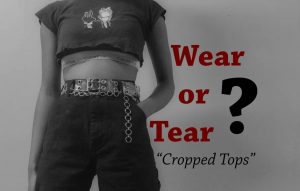The price for eating animals, the affects on factory farm-raised animals.
March 3, 2015
Most Americans want cheap, easy food. And they’ve gotten it, but at what price?
According to Jonathan Safran Foer’s book Eating Animals, quite a hefty one. The price we pay for the cheap food – especially factory farmed meat – extends beyond money. In result, we pay everyday in systematically abused animals, the near death of the family farm, stomach churning processing methods, polluted waterways, soil and air. The most apparent and probably biggest factor of the cheap food is obesity.
But five dollars for 20 chicken nuggets is worth it, right?
Not according to Foer in his book chronicling his transformation from self-described occasional omnivore to vegetarian.
As a vegetarian myself, I was very excited to learn more about eating animals, but did not expect the directness of Foer’s writing. He brings the topic to life with strongly worded tidbits, such as factory farmed chickens often soak up 11% of their sale weight while cooling in a post-slaughter bath of “fecal swill” (poop water). And that’s fecal swill you get to pay for. No wonder a recent health report showed two thirds of store bought chickens are contaminated with salmonella.
Foer dips into very sensitive topics without any remorse or warning. For example, he begins a chapter by talking about his dog, then sharply turns to the subject of eating dogs. He even includes a classic recipe for wedding-style dog.
Many Americans eat way too much meat, approximately 150 times more than 80 years ago. Farmers acknowledge that many of the factory farm conditions would improve if people ate less meat. The high demand for meat has caused farmers to breed animals to grow twice as much in half the time, causing extreme health problems and often death for the animals. But let’s face it, America doesn’t want to eat less meat.
Although Foer is still a committed vegetarian, he commends the efforts of small farmers who strive to use traditional practices to give animals a healthy, pleasant life and humane death.
This book may make those considering vegetarianism make a choice, and make vegetarians and vegans happier with theirs. It will make ethical meat eaters question the actual ethicality of their meat. It should turn factory farmed meat eaters into less frequent ones, at least for now. I would recommend this book to people who are interested in vegetarianism, but not those with weak stomachs, or extreme dog lovers.









